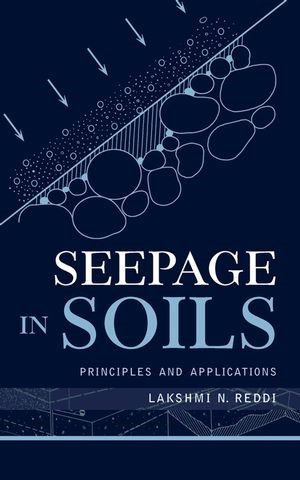Read more
Informationen zum Autor LAKSHMI N. REDDI, PhD, PE, is Professor and Head of Civil Engineering at Kansas State University in Manhattan, Kansas. He coauthored Geoenvironmental Engineering, and has authored numerous journal articles in geotechnical and geoenvironmental engineering. Klappentext Up-to-date coverage of fundamental seepage principles, closed-form solutions, and applicationsSeepage in Soils combines a broad range of applications with rigorous quantitative skills to give insight into the fundamental principles and mathematical solutions of seepage. A wealth of closed-form analytical solutions are provided to solve a variety of problems, minimizing the use of computer software and numerical models.Completely up to date with coverage of new developments in separators, filters, and geosynthetics, this textbook includes exercises in seepage quantification, seepage forces, and dewatering. Complete coverage is useful in all subdivisions of civil engineering. Material is divided into three modules:* Principles and mathematical solutions* Filters and drainage layers* ApplicationsOnly a nominal background in mathematics and soil mechanics is required for Seepage in Soils to serve as an invaluable resource for civil engineering students across many subdisciplines. In addition, it serves as a useful reference for geotechnical, environmental, and structural engineers, hydrologists, geologists, agronomists, and soil scientists. Zusammenfassung Up-to-date coverage of fundamental seepage principles, closed-form solutions, and applicationsSeepage in Soils combines a broad range of applications with rigorous quantitative skills to give insight into the fundamental principles and mathematical solutions of seepage. A wealth of closed-form analytical solutions are provided to solve a variety of problems, minimizing the use of computer software and numerical models.Completely up to date with coverage of new developments in separators, filters, and geosynthetics, this textbook includes exercises in seepage quantification, seepage forces, and dewatering. Complete coverage is useful in all subdivisions of civil engineering. Material is divided into three modules:* Principles and mathematical solutions* Filters and drainage layers* ApplicationsOnly a nominal background in mathematics and soil mechanics is required for Seepage in Soils to serve as an invaluable resource for civil engineering students across many subdisciplines. In addition, it serves as a useful reference for geotechnical, environmental, and structural engineers, hydrologists, geologists, agronomists, and soil scientists. Inhaltsverzeichnis Preface. 1. Introduction. 2. Principles of Flow. 3. Flow Nets. 4. Two-Dimensional Flow: Analytical Solutions. 5. Advanced Solutions for Seepage: Conformal Mapping. 6. Seepage Forces. 7. Soil Filters and Drainage Layers. 8. Geosynthetics in Seepage. 9. Seepage Control and Dewatering. 10. Subsurface Drainage in Pavement Systems. 11. Seepage at Waste Containment Facilities. References. Index. ...

